Modern Wargaming With “Force-on-Force” Part Three – Scenarios & Casualties
February 22, 2016 by crew
Welcome, Beasts of War, to round three of our foray into the fiery world of Force-on-Force, the modern warfare miniature rules system by Ambush Alley Games and Osprey Publishing. We hope these articles, presented by community members @unclejimmy and @oriskany, will shed some light on this system and this genre of gaming.
So far we’ve overviewed the game system in Part One, then pried into some greater detail on Morale & Irregular Forces in Part Two. For now, however, it’s time to once again head out on a “sweep and clear” of this amazing system, learning about how scenarios are designed and played, and how casualties work in Force-on-Force.
Scenarios
Force-on-Force is a scenario-driven game. There are no “point values” or other artificial mechanics to exploit to build unrealistically “perfect” armies. Like the game’s name suggests, these scenarios pit “force against force.” There are plenty of sample scenarios in the rulebook and many more in the additional supporting books.
Victory conditions are also determined by the scenario, which is where a lot of the asymmetry discussed in Part Two comes in. High-tech, expensive military units may have to control a whole district, suffer no casualties, and kill no civilians...where insurgents only have to set off an IED or ambush a patrol and inflict a handful of casualties.
Force-on-Force isn’t a game that wastes your time. At the outset, enemy units will probably be deployed on the table, a sobering fact given enemy units can declare “reactions” from the moment your units start to activate. If different types of modern firefights have anything in common, it’s that they are very, very fast.
Each scenario contains a description of how the table is to be set up. All major features will be marked. The size of the table is likely to be smaller than you are used to. For his games, unclejimmy finds that a 40"x40" board works well for most 20mm games. For games played in 15mm, Force-on-Force suggests that tables as small as 2'x2' or 2'x3' can work easily.
The scenario will also describe the use of “Fog of War” cards (if they are being used). The scenario will also indicate how many units each side has, their composition, and where they’ll be placed on the table. If any special rules apply to any unit(s) or to the game then they will be explained here.
In most games, all units will be set up on the table at the beginning of the game. Some may even already be in contact, which is unusual in wargames. Other units may be “hidden,” while still others will be staged off the table to come on the board during the course of play.
One more thing that may need to be designated now are “Hot Spots.” These are points designated on the game board where reinforcements may appear, particularly for irregular or insurgent units. This may strike some veteran wargamers as odd, almost as if enemy insurgents are appearing from “spawn points” in a video game.
Of course, this isn’t quite true. These insurgents aren’t appearing from thin air, they are simply applying local knowledge. They know all the short-cuts, drainage ditches, jungle trails, and holes in the walls. This gives their opponents the eerie feeling that the enemy can a appear from almost anywhere.
Note that “Hot Spots” can be neutralized by enemy forces (throwing grenades down spider holes or fragging the entrance to a jungle tunnel complex). And some scenarios do not use them at all. They’re just one more scenario option Force-on-Force uses to make the game more asymmetrical, like the modern wars the game seeks to simulate.
Casualties
War is a full-contact sport, played for keeps. Sooner or later (probably sooner) people are going to be hurt...badly. Yet another way in which Force-on-Force stands apart from other games is how casualties are handled. Figures aren’t simply removed from the table. Casualties have a major impact on the game beyond their simple absence.
If you watch any documentary about modern combat units or have read any accounts of combat actions then you will be familiar with the expression, “nobody gets left behind.” With most combat units this also applies to the dead. Force-on-Force has an elegant set of mechanics to this into account.
You may be forced to halt that perfect assault because of an ill-timed injury. You might want that squad to keep going, but they’re more concerned about their comrade than your “objective.” Nothing complicated, these may be plastic minis on the table but they are meant to represent real flesh-and-blood soldiers on the modern battlefield.
The simple truth is that wounded men must be helped along. Sometimes civilians must be safeguarded or escorted. Captured prisoners must be taken in tow, especially if he or she has critical intel. Even the dead must be carried, soldiers are very serious about making sure a fallen brother-in-arms gets home to his family...no matter what.
In game mechanics, such personnel are called “dependants” on a unit. If a unit has a casualty or dependent, it must make a Troop Quality check (see Part One) in order to move faster than “tactical speed.” With a casualty in the unit it is best to take it easy.
A unit can hand over a casualty to trained medics, or one of them can escort a prisoner or civilians to a safe point. This would allow the unit to ignore taking the TQ check, but it also means they are now another man down.
In Force-on-Force, there are also different levels are wounds. “Hits” are not simply counted to see how many figures are removed from play. There are first aid checks that may redeem personnel who have been hit. It also bears noting that slightly wounded men, while they still slow down the unit, can also still add to the unit’s firepower.
Once a unit sustains casualties, it’s sometimes important to know exactly who in the unit has been hit. In most modern combat units everyone is cross-trained, if the Sergeant is hit then the Corporal takes command. However, it is important to know who got injured if your squad contains a specialist, such as a Medic or TAC.
This can be even more important in irregular forces because they are (in general) poorly trained and need constant supervision. If an irregular militant is carrying a medium machine-gun then it is likely that nobody else in that squad is familiar with it. Thus, that squad might lose some of its firepower.
Tracking casualties among the leaders of irregular units is also important because of the general frailty of their command structure (or lack thereof). Should the leader be removed the squad needs to roll a troop quality check to see if it can react. If it fails it can do nothing for the rest of the turn.
If an irregular casualty is not a leader, however, or carrying a special weapon, typically the figure is just removed from the squad. These wounded insurgents are spirited away by locals, usually unseen by enemy forces. After many modern firefights, it is not unusual to find no enemy bodies at the scene.
However, this is not the case for regular troops that are trained to keep injured comrades safe.
We hope this article has stimulated further thoughts, interest, or discussion on Force-on-Force, or modern wargaming in general. In our last article next week, we’ll briefly discuss vehicles in the game, as well as taking a look at some of the supporting books and materials that have been published for Force-on-Force.
In the meantime, please comment below with questions, comments, or suggestions. Best of all, if you’ve ever tried Force-on-Force, or a similar moderns wargame, tell us about your experience!
If you would like to write an article for Beasts of War please contact us at [email protected] to find out more!
"Force-on-Force isn’t a game that wastes your time. At the outset, enemy units will probably be deployed on the table, a sobering fact given enemy units can declare “reactions” from the moment your units start to activate..."
Supported by (Turn Off)
Supported by (Turn Off)
"If you watch any documentary about modern combat units or have read any accounts of combat actions then you will be familiar with the expression, "nobody gets left behind"..."
Supported by (Turn Off)





























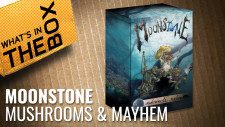

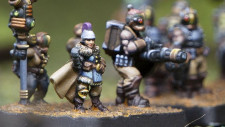
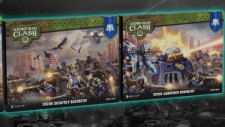
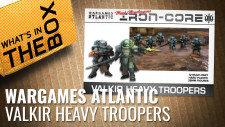

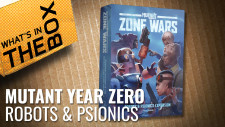
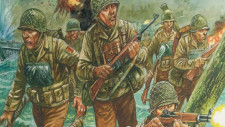




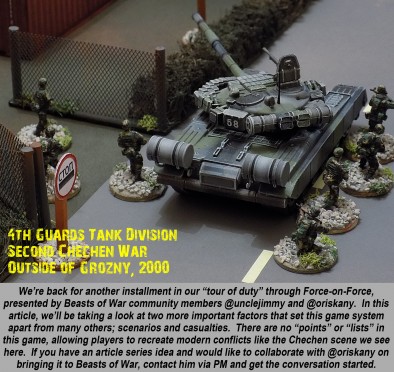
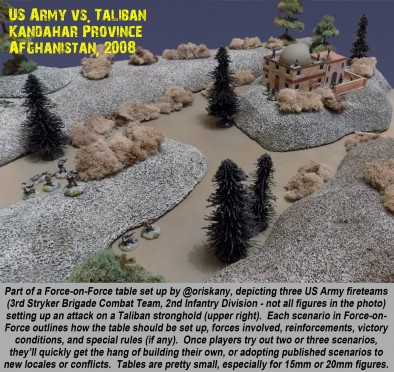
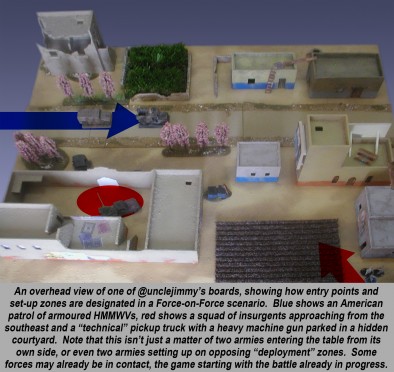
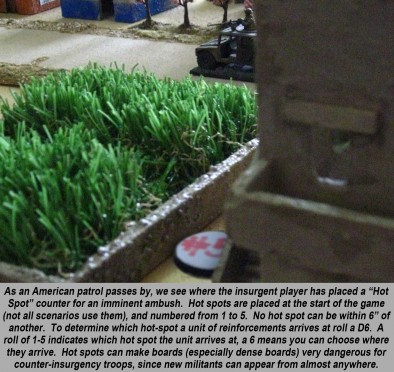
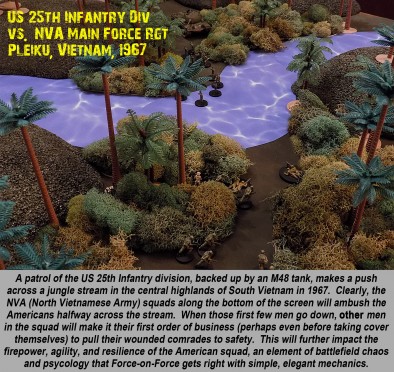
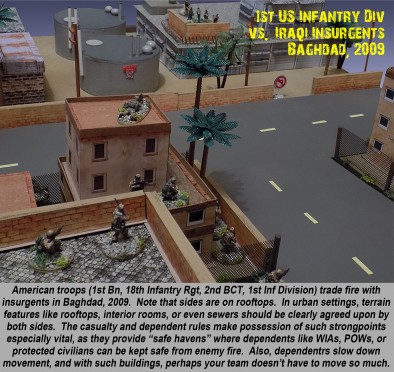
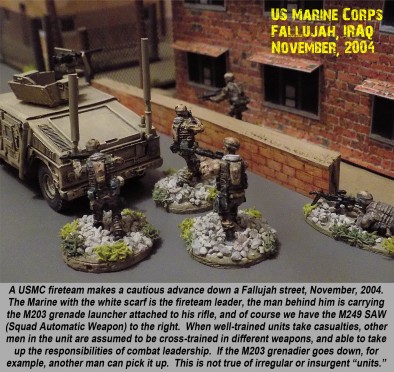


















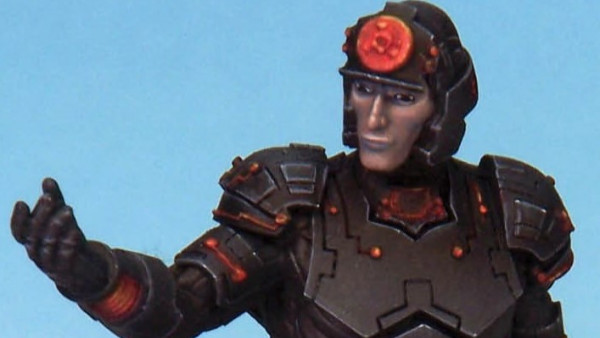
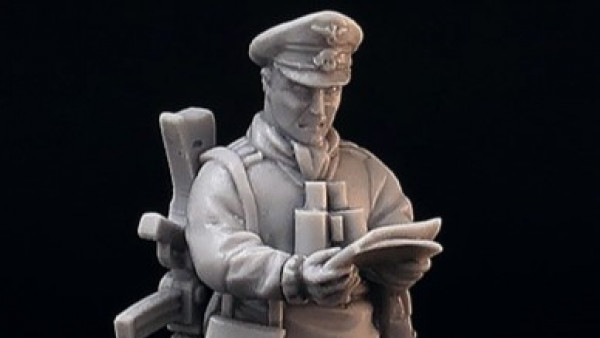

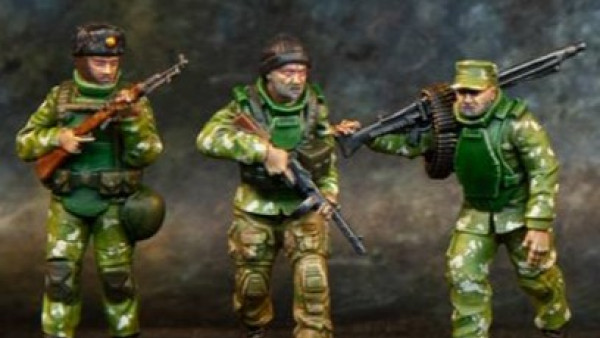
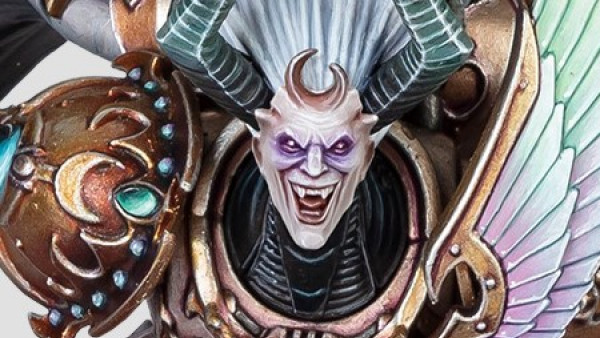



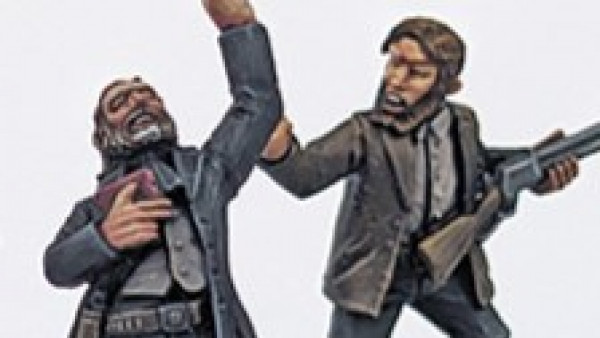
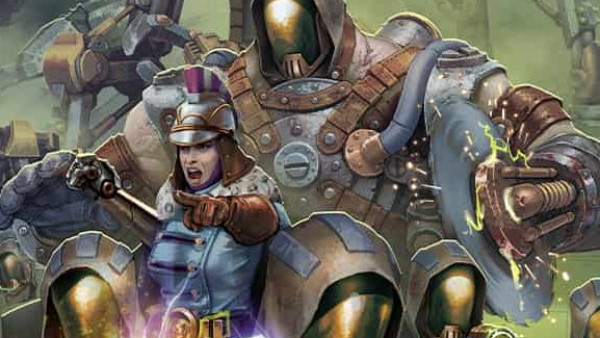


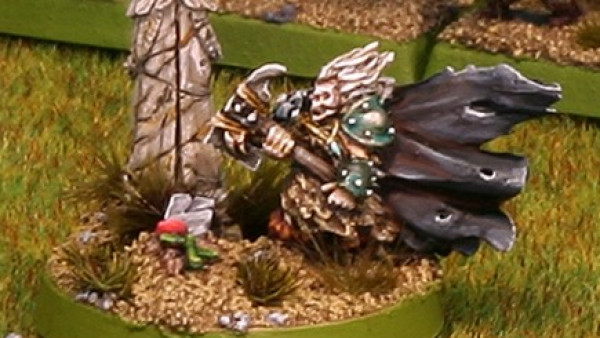
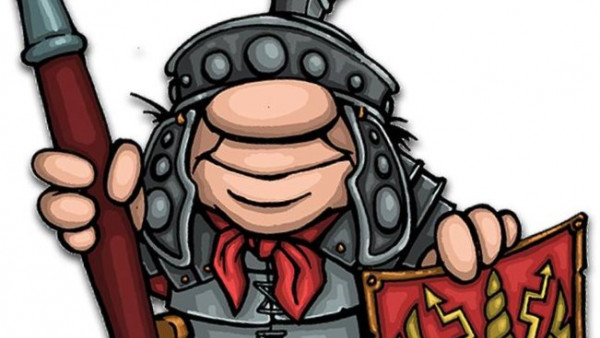
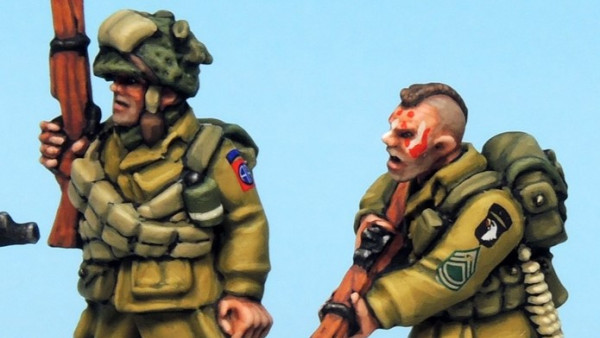
Best part so far guys, I really like the idea that you can start a game in contact, as that’s normally how most of the crap in modern warfare goes down. Thumb up bum, mind in neutral, then a whole world of hurt decends on you from a great height! And as quick as it starts, it’s over. I like the special rules for casualties, it is very realistic and adds to the complexity of your strategic thinking when you react to a situation. It will certainly reduce the number of “dare to be great” moments that we do in… Read more »
Thanks, @brucelea – The actual rule book wasn’t too bad, although of course I only have the ,pdf version ($25.00). As far as miniatures go, I’m very “disloyal.” Whoever can supply me with what I need, when I need it (very impatient) gets my dollar. My infantry figures are mostly Caesar Miniatures 20mm (great detail, amazing low price, but no bases and verrrry soft plastic). Vehicles are from all over, because they are 1/72 many of them are actually small model kits rather than actual “gaming miniatures.”
Amazon is a good source of cheaper rulebooks, but I buy the pdf version directly from AA. As for minis then you have to have the best. Elhiem miniatures and S&S are my favourites.
Cost – rulebook = £15 (pdf), minis in 20mm = squad for @£4. You don’t need many models and no more than two or three vehicles.
Are you using any ‘Tricky’ or ‘Pedro’ casevac assets and if so what fire support are they going in with. Have you got a reaction time for a VHR shout based on those assets?
Great questions, @noyjatat . BASICALLY . . . and I’m really paraphrasing from the book here, when a regular soldier (as opposed to irregular) becomes a casualty, the fireteam or squad (assuming they make their morale trigger) has a basic choice. Severely injured or dead comrades apply a reaction penalty to the unit. Essentially, one action for the unit per turn is assumed to be invested in looking after / carrying the casualty. Alternately, the squad can lose a SECOND man, and that man is assumed to be evacuating the casualty off the board. But then the squad can operate… Read more »
Very cool buddy.
It may be worth adding some random air support asset availability depending on theatre. I would suggest Balkans onwards from experience. I know of a number of instances where rotary aircraft returning from battle spaces found themselves redirected to provide air support. In one instance they were lucky enough to be within 2 minutes of a VCP that was under SAF. Normally it would take our guys around 12 minutes to be on station which the insurgents knew, so they were unprepared when they were engaged. An extra layer for story perspective that may be worth considering is a set… Read more »
@noyjatat – SO FAR one of the only things keeping me (personally) off this track is a lack of actual miniatures, at least in regards to helicopters. Fixed-wing airstrikes don’t necessarily need them. You call in the air strike or “Show of Force” (see Part One) – where the F-15 blasts at 200 feet over the area with its afterburners kicking and basically scares the crap out of anyone on the other side … http://www.beastsofwar.com/force-on-force/modern-wargaming-introduction/ Honestly, I just haven’t had a need for a fixed-wing air strike yet. I play on 3′ boards, more than enough for this game, at… Read more »
For the Apache you don’t actually need a model. Most engagements with the 30mm chain gun are carried out at range. With the TADS/PNVS upgrade they now have they are highly accurate at ranges up to 1k. Track speed and cone of effect is small enough to for it to be considered a precision weapon system when operating in theatres. Hellfires I agree would be unlikely to be used and rockets are rarely used due to flechette and potential civilian casualties.
Some Fog-of-War cards will give you air-support and any TAC you have can request them.
next monday can’t come soon enough 🙂
Really just keeps getting better. Thanks guy’s I know how much you put into this, it deserves a great deal applause. Looking forwards to the next instalment cannot be the last surely. Is it me or should these sections A, have more than just the four I know each is a lot of work, but you just get into a thread and then its gone. B, Can we have more of this sort of a thing even though poor old Oriskany must be knackered covering and editing, is there no one else out there that could shoulder this load. Not… Read more »
Thanks, @limburger and @chrisg . 😀 Speaking only for myself, I usually limit a series to 4 or 5 articles at the most, only because I’m always half-afraid people will get tired of a given subject matter. And, sure, I may have done a lot of the “slice and dice, polish up, partial-assembly-required” work on these, but unclejimmy provided almost all the raw material. He’s got a lot more experience in Force-on-Force than I do (I only started late last year for the Ukraine article series). As far as the “collaboration program” goes, we’ll see how it goes. Not 100%… Read more »
The hot spots sounds like a good game changer can you use then hidden so the other player can’t pre-empt an attack when passing one? Casualties are intresting.
May be good in other games to spice things up? guys
Thanks, @zorg . I’m pretty sure “Hot Spots” are not hidden (at least I haven’t found any scenarios with them yet myself). I’m not sure how you would do that, unless you also had a certain number of “dummy” hot spot counters, and then all the hot spot counters were inverted. That way “government” troops wouldn’t know whether a doorway, tunnel, or sewer entrance was a potential hotspot until they actually went there and kicked down a door or tossed in a frag grenade (i.e., shutting down a hot spot). The fact that insurgents have to roll which hot spot… Read more »
nice a good way to brake up a professionally trained unit.
Although it’s a great idea, @zorg , to use hotspots in other games. 😀
Another great article. I especially like how guys who are hit arent just taken off the table. You have to take care of them. Seems a little more realistic, since these are supposed to be real people and their best friends.
Thanks, @gladesrunner . 😀
@Oriskany and @unclejimmy very nice work. Jim, what was one of the most poingent rules of combat we all learned in basic? It takes two to take a wounded soldier out of harms way. We were trained attrition was the key. If you think the rotor disc was big on a Blackhawk, you should see it when we tried to squeeze it into what I swear was an opening in the canopy the size of a matchbox.
Thanks, @stvitusdancern – Oh yes, I still remember yelling out the drills they’d make us repeat at all hours of the day:
Four Life Saving Steps!
Stop the Bleeding! Restore the Breathing! Protect the Wound! Treat for Shock, sir!
As for 1:72 Blackhawks, here’s what I’ve found so far . . .
http://www.hasegawausa.com/product-images/hsgs0433bs01x-lg.jpg
have you seen this one?
http://www.amercom-hobby.com/index.php?route=product/product&product_id=53&search=blackhawk
Oh, damn, @zorg . I think I like that one better. 😀 Anything pre-painted is a friend of mine, especially at this scale.
have you seen the tanks & armoured vehicles @oriskany all at 1:72
To be perfectly honest, @zorg – after Ukraine last year and helping with this series this year . . . I’m taking a short break from 1/72 20mm moderns for a while, maybe to get back to WW2 roots, some alternate history, some other history further back . . . ** BUT . . . I will say it would be nice to have a 1/72 T-55. When it comes to post-war tanks, if you can only have one tank, a “realism” or “accuracy” gamer will probably get more mileage and use out of a T-55 than just about anything… Read more »
I bought 4 die-cast Blackhawks when they were with a magazine – £1.99 each.
However, I need two Chinooks now!
@oriskany posted a photo in the Ukraine thread as it won’t let me do it here which may be useful.
No worries, @noyjotat . I often do the same thing (post a photo in a forum somewhere and link it to a front page article).
http://www.beastsofwar.com/groups/historical-games/forum/topic/modern-wargaming-ukraine-2014-15/?topic_page=3&num=15
This is some great information on casualty procedures. I especially like the decision branches involving whether you or the casualty are under “effective enemy fire” or whether you ARE the casualty. Thanks for posting! 😀
Welcome buddy, its the most recent edition. Made for ease of use in stressful situations and reinforces training which is to win the fight fight or remove the casualty to cover before applying any substantial battlefield first aid. Difficult to say whether each soldier would follow that advice in the real situation though.
I think that’s the “point” of this kind of military drill and training. It seems brainlessly repetitious . . . but it’s meant to make procedures like this truly second nature, so when the s*** hits the fan, the soldier reacts automatically. He / she doesn’t have to think, because in these situations, you often can’t think.
The more you sweat in peace, the less you bleed in war . . .
. . . or as Josephus (I think) once wrote of the Romans:
“Their maneuvers are like bloodless battles, their battles like bloody maneuvers.”
True and we further augment this with pre deployment training and varying levels of optag upon arriving in theatre.
Does this man we’re getting the M*A*S*H choppers next? Hawkeye and Colonel Potter figures? 😀
Sure, @gladesrunner . Radar O’Reilly gets a +3 to spot their approach . . . 😀
Derek always says – “hard training, easy war.”
Great job, as usual, @oriskany and @unclejimmy :-). I’m convinced.
Thanks, @cpauls1 – I think @unclejimmy is trying out Tomorrow’s War, to see if this idea can be expanded into more futuristic sci-fi. And as you can see in the photos above, I’ve been playing around with the idea of using this in a Vietnam setting. 😀
That would be so cool 🙂
Keep at it gentlemen.
Well, @limburger – @unclejimmy has the Tomorrow’s War book. I guess we’ll see what he comes up with. From what I gather he’s got a little bit of “real life” on his plate right now, but I’m sure he’ll rejoin us soon. 😀 😀
For those that don’t know, Ambush Alley is the Vietnam rules expansion for FoF
Very true, @aloharover . We take a look at Ambush Valley in the next article along with eight other expansions / supplements for Force-on-Force. 🙂 Stay tuned!
Finally caught up with this, might be something to put the TY minis to good use with, they have not been used for much since the bootcamp
Team Yankee minis to play Force on Force? Sure, the book says the game can be played with anything from 10mm to 28mm. You may have seen this in the first part of the article series . . . I don’t want to bring up any Boot Camp flashbacks (Oh, who am I kidding, you won most of the games we played 🙂 )!
http://www.beastsofwar.com/wp-content/uploads/2016/02/Image_Collab02_1G.jpg
Interest for modern/cold war gone hot (or TY at least) locally have not been great – but I have this nice army I need to try to use for some thing, it might be a little vehicle heavy for FoF, but that can be charged (else it might just be part of the first of my toys to get shipped out, who know which game the new world will bring me)
Indeed, @rasmus , I think Force-on-Force is meant as a more of an infantry game. The rules for vehicles are great, don’t get me wrong (we discuss them briefly in Part IV). But they’re pretty detailed, meaning that most FoF games would probably work well with maybe 1-2 vehicles per side.
Really enjoying this series, thank you, guys 🙂
Thanks very much, @niktyrrell – one more to go next Monday! 😀
Always wanted to see a Grozny themed game.
That would be absolutely brutal.
Uh oh . . . The GRU field operator is back! 😀 For a Grozny game, Force-on-Force would certainly support it. As we found in the Ukraine series, there’s a wide variance on general opinion on just how good (or bad) Russian regular soldiers are. There good units and bad units, and some research would have to done to objectively ascertain which units you’d want to portray, which Chechen War you’d want to show (more than one if memory serves), and how professional you’d want those Russian army squads to be. I’ve read accounts that portrayed certain units to be… Read more »
The all seeing eye of the GRU never sleeps. 🙂